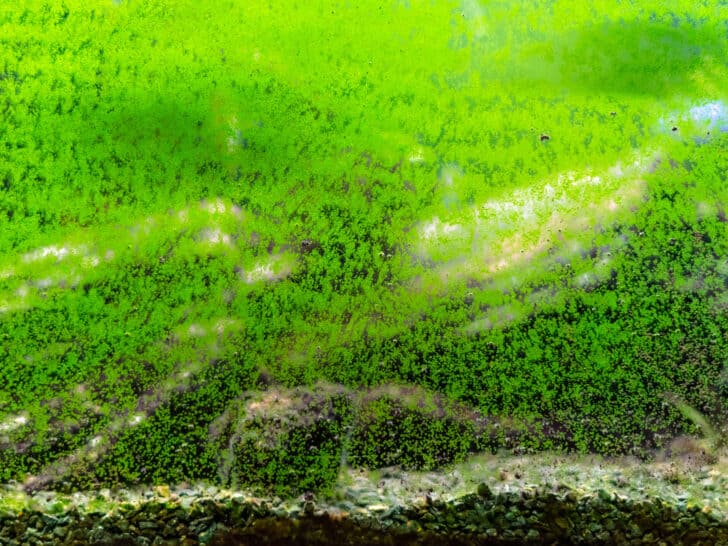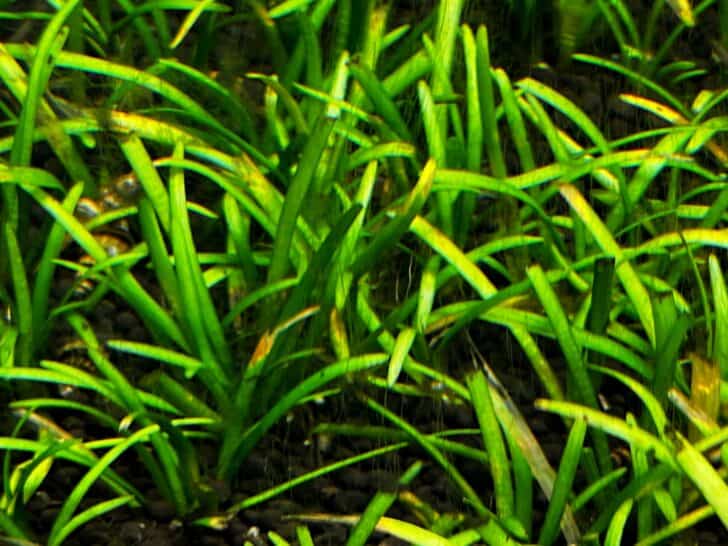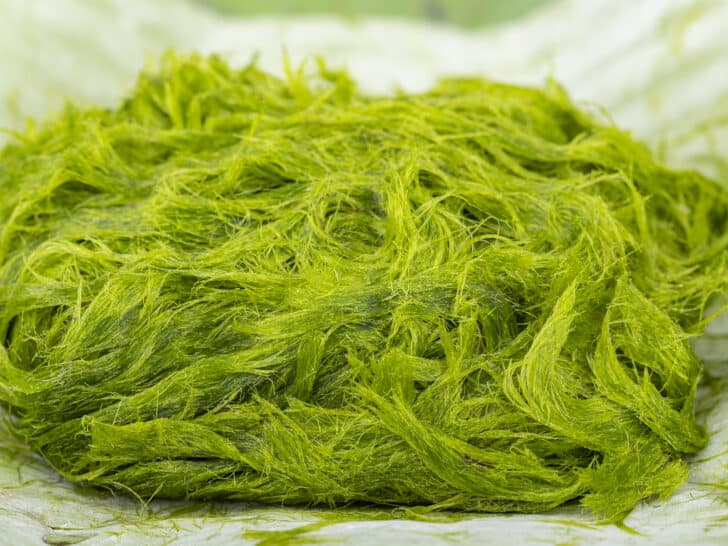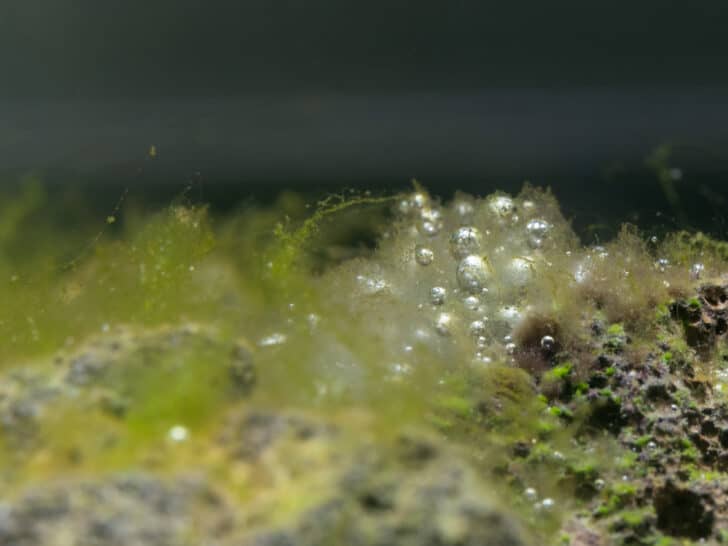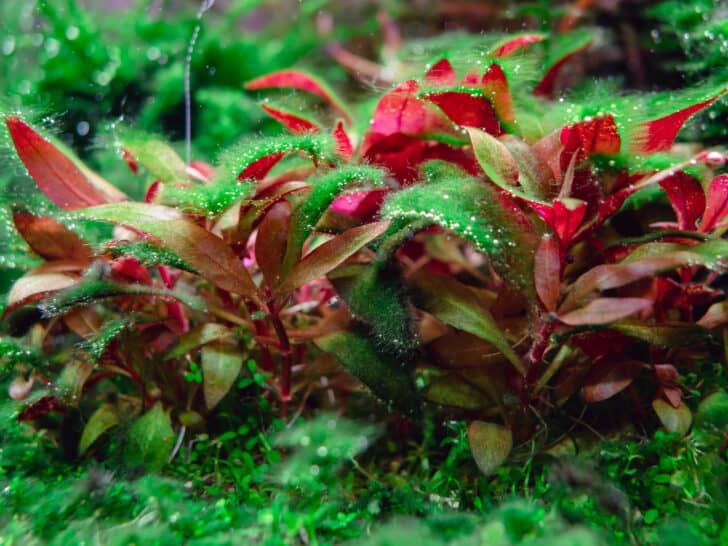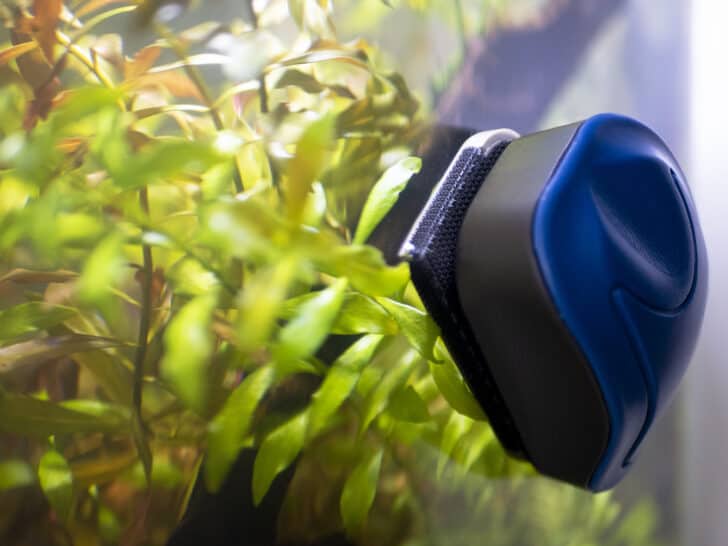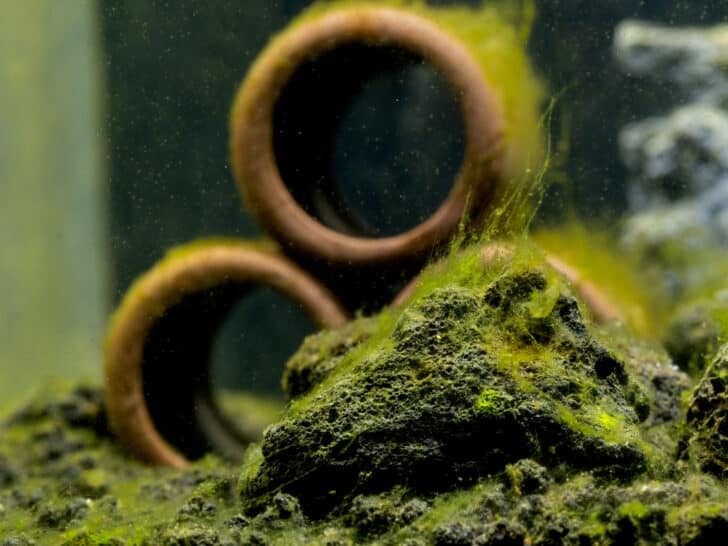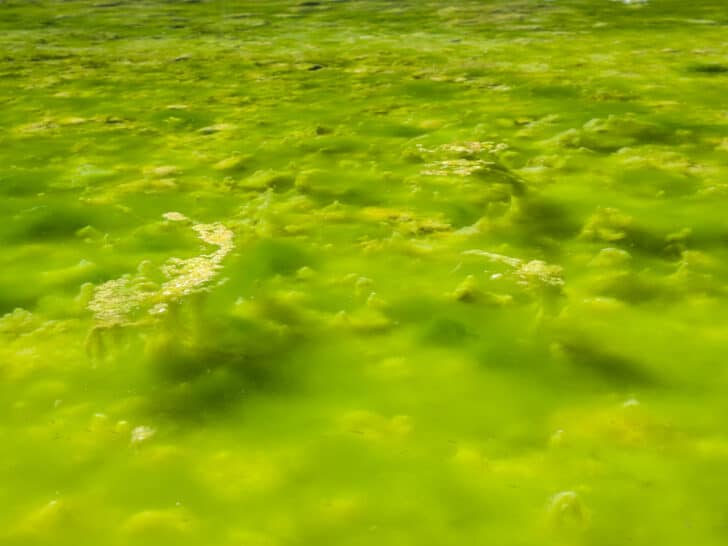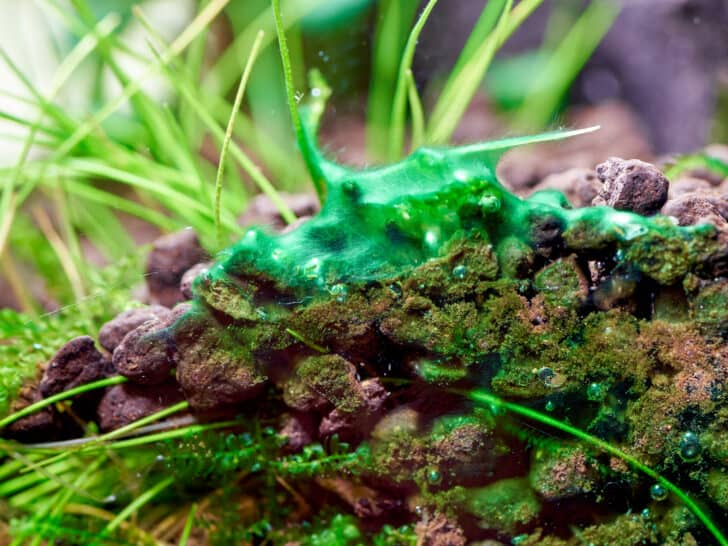Black algae can quickly overtake an aquarium, something I’ve had to deal with once before. Learning how to prevent and remove black algae is thus crucial.
Quick Answer
To remove black algae from an aquarium, physically remove it, clean the water, maintain the tank, add algae eating fish, ensure aquarium plants are healthy and growing, increase levels of CO2, decrease levels of light, and if necessary, use a variety of chemical treatment options.
Today, I’m going to teach you what black algae is, what causes it, how to prevent it from occurring, and if it does occur, how to remove it from your tank.
What is Black Algae?
Black algae is also known as black beard algae or black brush algae, and its scientific name is audouinella. This is a very difficult to deal with and stubborn type of algae that’s technically a part of the red algae family, as opposed to what you might think due to its name.
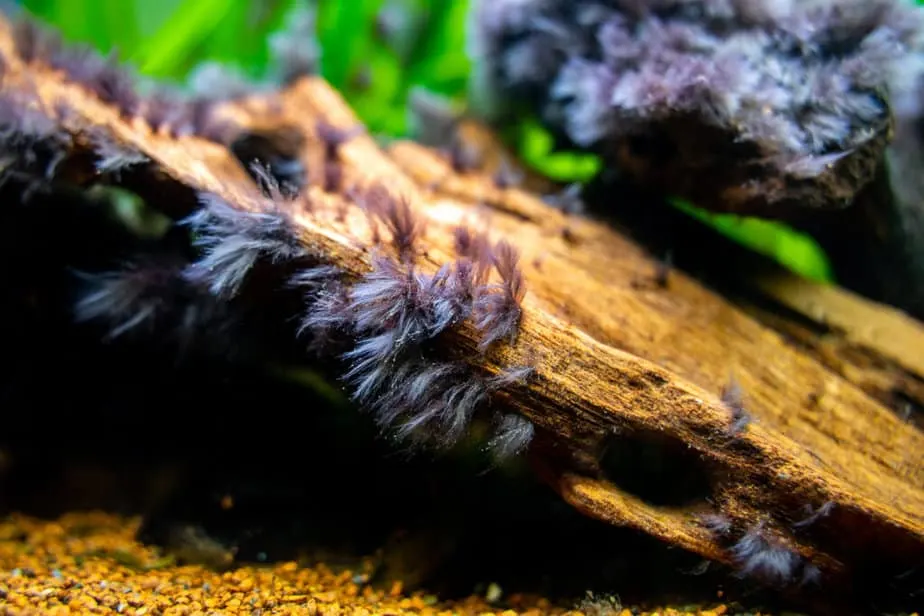
Its appearance takes the form of a scraggly and dark black beard, or may sometimes be dark green. This is a naturally occurring type of algae that is present in most aquariums, but it usually doesn’t bloom.
However, there are occasions where if the tank conditions are right, Blackbeard algae can bloom and overtake a tank.
It may not technically not be harmful to your fish in terms of toxicity, but it can block out light from getting to your plants, and effectively suffocate them. You may notice black beard algae growing on substrate, aquarium decorations, rocks, driftwood, and plants.
What Causes Black Algae?
The unfortunate reality is that there is often not much you can do to prevent the introduction of black beard algae into your fish tank. It’s usually introduced into aquariums through contaminated decorations, plants, or even fish.
Those small black algae spores can attach themselves to more or less anything. This makes black algae very easy to spread from one tank to another.
That said, the proper tank conditions are required for black algae to bloom. There are a few main causes of black algae blooms in fish tanks, including poor water conditions and poor water filtration, combined with elevated phosphate and nitrate levels.
Excess fish waste, decaying plant matter, and leftover food can also cause high levels of ammonia and other nutrients in the water which algae feeds on.
Furthermore, having too much light in a fish tank, unhealthy plants, and low CO2 levels may also cause algae blooms to occur. If you don’t have enough aquarium plants, or the plants you have aren’t healthy, then all of the excess nutrients in the aquarium will be available for the algae to feed on.
How to Remove Black Algae from an Aquarium
Now that you know why black beard algae occurs in fish tanks, I want to teach you how to remove as much of it as possible.
Physical Removal
Black beard algae can be fairly stubborn, but it is possible to remove a good deal of it by hand. You can use paper towels, clothes, sponges, and aquarium glass magnets, whatever works best for you.
Try to wipe away as much of it from all of your plants, decorations, hardware, and more. This is a very stubborn and invasive type of algae, so physical removal alone likely won’t be enough, but it does qualify as a great start.
Hydrogen Peroxide Bath
To take this one step further, any hardscape features, ornaments, and plants that you can remove from the tank should be given a hydrogen peroxide bath. Hydrogen peroxide will kill black beard algae.
You could also put roughly 3 teaspoons of hydrogen peroxide in your aquarium for every 10 gallons of water.
Make sure to do so when both the filter and the lights have been turned off, and wait for about an hour to turn them back on once the hydrogen peroxide has been introduced into the tank.
Introduce Algae Eaters
A great way to take care of any remaining algae that you weren’t able to physically remove is by introducing algae eating animals into your fish tank. Unfortunately, there aren’t all that many fish or critters that will eat black algae, as it is not very palatable, but there are a few.
Some of the best fish to have on this front include Siamese algae eaters, the Florida flagfish, mollies, the hillstream loach, and the panda garra. Amano shrimp and ramshorn snails are also known for enjoying a good black beard algae snack.
Water Changes and General Maintenance
You should also perform a 30% water change right away, as this will help remove a good deal of the black algae spores from the water. In no way will this remove all of the algae from the water, but it does help. Furthermore, regular tank and filter maintenance is very important here.
An aquarium filter is generally your first line of defense against invaders such as algae. Your aquarium filter, the mechanical filtration aspect, helps to remove physical debris from the water that can release nutrients which the algae feeds on.
Furthermore, the biological filtration aspect helps to break down the food that algae feeds on. Either way, you should have a decent aquarium filter that features chemical, biological, and mechanical filtration.
This combination will help remove a good deal of the nutrients that algae feeds on, therefore removing its food source, and effectively causing it to slowly die off.
To give your filter a helping hand, you can always start physically removing decaying plant matter, uneaten fish food, and fish waste from the water. Anything you can do to remove food sources for the algae should be done.
Chemical Treatments
The other option you have left at your disposal is to use chemical treatments, of which there are many to choose from. There are plenty of treatments designed specifically for aquariums and algae removal.
We recommend doing some research into a variety of algae control products to see if they are right for your aquarium.
How to Prevent Black Algae in Fish Tanks
With as much black algae removed from your fish tank as possible, let’s talk about how to prevent another bloom from occurring.
- Make sure that you have plenty of healthy aquarium plants that are growing, such as Vallisneria. Growing plants require nutrients, which means that they eat the nutrients in the water column which would otherwise be available for algae to feed on.
- Make sure to have a functioning aquarium filter that features all three major types of water filtration, as this will also help remove food sources from the water.
- Physically change about 30% of the water in your tank every single week, perform weekly aquarium maintenance, and make sure that your filter is always running properly.
- Adding some algae eating fish and critters into the water is a great way to prevent another bloom from occurring, as they’ll eat small amounts of algae before they get a chance to spread.
- You can try adding some more carbon dioxide into the water, as black algae blooms are often associated with low carbon dioxide levels.
- High light levels of lighting are also known for causing algae growth to occur. Therefore, reducing the amount of light you give your aquarium to no more than 9 or 10 hours per day is recommended.
Conclusion
Now that I’ve taught you everything you need to know about black algae, you should know what causes it, how to remove it from your tank, and how to prevent it from blooming in the first place.

